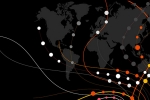Pillar
|
Theme
|
Metric and Disclosure
|
URLs
|
Comments
|
Principles of
Governance
|
| |
Governing Purpose
|
Setting purpose
The company’s stated purpose, as the expression of the means by which a business proposes solutions to economic, environmental and social issues. Corporate purpose should create value for all
stakeholders, including shareholders.
|
Why we Exist
|
Our Purpose and Values are the foundation of our success. We exist to build trust and solve important problems, and our values help us deliver on that Purpose.
|
| |
Quality of governing body
|
Governance body composition
Composition of the highest governance body and its committees by: competencies relating to economic, environmental and social topics; executive or non- executive; independence; tenure on the governance
body; number of each individual’s other significant positions and commitments, and the nature of the commitments; gender; membership of under- represented social groups; stakeholder representation.
|
Governance
|
Our firm is led by a CEO, assisted by a Deputy Managing Partner, who is, like the other members of the Board, elected for four years by the shareholders. Currently, the members of the Management Board are: John Parkhouse (Territory Senior Partner, CEO), Rima Adas (Deputy Territory Senior Partner), Olivier Carré, Gérard Cops, François Génaux, François Mousel, Anne-Sophie Preud’homme and Marie-Elisa Roussel-Alenda. The audit of the firm’s financial statements is carried out by an independent local audit firm. |
| |
Stakeholder engagement
|
Material issues impacting stakeholders
A list of the topics that are material to key stakeholders and the company, how the topics were identified and how the stakeholders were engaged.
|
Our Corporate Responsibility and Sustainability Journey
|
In 2016, we identified 15 sustainability topics material for PwC Luxembourg, 7 of which are of priority. We use these 7 topics to share where we, as PwC can and should make a difference for all our stakeholders and how we measure success as a result, both financial and non- financial.
|
| |
Ethical Behaviour
|
Anti-corruption
1. Total percentage of governance body members, employees and business
partners who have received training on the organisation’s anti-corruption policies and procedures, broken down by region. a) Total number and
nature of incidents of corruption confirmed during the current year, but related to previous years; and b) Total number and nature of incidents
of corruption confirmed during the current year, related to this year.
2. Discussion of initiatives and stakeholder engagement to improve the broader operating environment and culture, in order to combat corruption.
|
Independence and Conflict of Interest
|
|
| |
Ethical Behaviour
|
Protected ethics advice and reporting mechanisms
A description of internal and external mechanisms for:
1. Seeking advice about ethical and lawful behaviour and organisational integrity; and
2. Reporting concerns about unethical or unlawful behaviour and lack of organisational integrity.
|
Legitimacy and Ethics
|
Legitimacy and Ethics is one of our material sustainability topics. Ethical behaviour, values and purpose are fundamental for our business, and for the trust our clients, communities and people place in us.
|
| |
Risk and opportunity oversight
|
Integrating risk and opportunity into business process
Company risk factor and opportunity disclosures that clearly identify the principal material risks and opportunities facing the company specifically
(as opposed to generic sector risks), the company appetite in respect of these risks, how these risks and opportunities have moved over time and the response to those changes. These opportunities and risks should integrate material economic, environmental and social issues, including climate change and data stewardship.
|
Message from our CEO
|
|
Planet
|
| |
Climate Change
|
Greenhouse gas (GHG) emissions
For all relevant greenhouse gases (e.g. carbon dioxide, methane, nitrous oxide, F-gases etc.), report in metric tonnes of carbon dioxide equivalent (tCO2e) GHG Protocol Scope 1 and Scope 2 emissions. Estimate and report material upstream and downstream (GHG Protocol Scope 3) emissions where appropriate.
|
Environmental Impact
|
‘Greenhouse Gas Emissions’ was a sustainability topic identified through our stakeholder engagement; and Environmental Impact is one of our core Corporate Responsibility Pillars. 70% of our GHG emissions come from our staff commuting from a neighbouring country on a daily basis. This is the priority for us for our journey to become net zero.
|
| |
Climate Change
|
TCFD implementation
Fully implement the recommendations of the Task Force on Climate-related
Financial Disclosures (TCFD). If necessary, disclose a timeline of at most three years for full implementation.Disclose whether you have set, or have
committed to set GHG emissions targets that are in line with the goals of the Paris Agreement – to limit global warming to well below 2°C above pre industrial levels and pursue efforts to limit warming to 1.5°C – and to achieve net-zero emissions before 2050.
|
|
Omission
While we have a team working on TCFD implementation for our clients, we have not yet started to process within our own firm.
|
| |
Nature Loss
|
Land use and ecological sensitivity
Report the number and area (in hectares) of sites owned, leased or managed in or adjacent to protected areas and/or key biodiversity areas
(KBA).
|
|
Omission
This disclosure is not relevant for us because the sites we own are not located in or adjacent to protected areas and/or key biodiversity areas.
|
| |
Freshwater Availability
|
Water consumption and withdrawal in water-stressed areas
Report for operations where material: megalitres of water withdrawn, megalitres of water consumed and the percentage of each in regions with high or extremely high baseline water stress, according to WRI Aqueduct water risk atlas tool. Estimate and report the same information for the full value chain (upstream and downstream) where appropriate.
|
|
Omission
This disclosure is not relevant for us because we are not located in a water-stressed area.
|
People
|
| |
Dignity and Equality
|
Diversity and inclusion (%)
Percentage of employees per employee category, by age group, gender and other indicators of diversity (e.g. ethnicity)
|
People Statistics
|
It is a GRI disclosure to provide information on the scale of your organisation, which is why we include this information.
|
| |
Dignity and Equality
|
Pay equality (%)
Ratio of the basic salary and remuneration for each employee category by
significant locations of operation for priority areas of equality: women to men,
minor to major ethnic groups, and other relevant equality areas.
|
Diversity and Inclusion
|
Diversity and Inclusion is one of our four Corporate Responsibility pillars, and pay equality is a material topic within this field.
|
| |
Dignity and Equality
|
Wage level (%)
Ratios of standard entry level wage by gender compared to local minimum wage. Ratio of the annual total compensation of the CEO to the median of
the annual total compensation of all its employees, except the CEO
|
|
Omission
PwC Luxembourg is in compliance with the minimum social wage in Luxembourg. Therefore, this metric is not material for us.
|
| |
Dignity and Equality
|
Risk for incidents of child, forced or compulsory labour
An explanation of the operations and suppliers considered to have significant
risk for incidents of child labour, forced or compulsory labour. Such risks could emerge in relation to: a) type of operation (such as manufacturing plant) and type of supplier; and b) countries or geographic areas with operations and suppliers considered at risk.
|
|
It is important to remember that all our suppliers sign our Charter of Responsible Purchases. By signing this Charter, our suppliers have agreed to respect the Universal Declaration of Human Rights (UDHR) and follow social, ethical and environmental requirements |
| |
Health and Wellbeing
|
Health and safety (%)
The number and rate of fatalities as a result of work-related injury;
high-consequence work-related injuries (excluding fatalities); recordable work-related injuries; main types of work-related injury; and the number of
hours worked. An explanation of how the organisation facilitates workers’ access to non- occupational medical and healthcare services, and the scope of access provided for employees and workers.
|
Health and Wellbeing
|
Health and Wellbeing is one of our material sustainability topics.
We track statistics on Occupational Health and Safety injuries, but our priority focus remains to achieve our zero burnout target. This ensures that our staff are healthy (physically and mentally) and in a healthy work environment.
|
| |
Skills for the Future
|
Training provided (#, $)
Average hours of training per person that the organisation’s employees have undertaken during the reporting period, by gender and employee category
(total number of hours of training provided to employees divided by the number
of employees). Average training and development expenditure per full time
employee (total cost of training provided to employees divided by the number of employees).
|
Continuous Learning
|
Continuous Learning is one of our material sustainability topics. It is the basis of solving important problems for our clients, it allows us to create shared value in society.
While we disclose statistics on training provided, we do not categorise it by gender; nor do we provide expenditure costs.
|
Prosperity
|
| |
Employment and wealth generation
|
Absolute number and rate of employment
1. Total number and rate of new employee hires during the reporting period, by age group, gender, other indicators of diversity and region.
2. Total number and rate of employee turnover during the reporting period, by age group, gender, other indicators of diversity and region.
|
People Statistics
Employee Journey
|
Employee Journey is one of our material sustainability topics.
We use factors such as “Attractiveness” and “Retention” to identify 1) how we stand on the market in comparison to our competitors and what we can offer; and 2) the level of employee “care” we provide and the beneficial experience they gain with us.
|
| |
Employment and wealth generation
|
Economic contribution
1. Direct economic value generated and distributed (EVG&D), on an accruals basis, covering the basic components for the organisation’s global operations,
ideally split out by:
– Revenues
– Operating costs
– Employee wages and benefits
– Payments to providers of capital
– Payments to government
– Community investment
2. Financial assistance received from the government: total monetary value of
financial assistance received by the organisation from any government during the reporting period.
|
Community Engagement
|
Financial information we disclose includes: Turnover, Net Revenues, Percentage of Turnover Per Line of Service, Growth Per Line of Service, Percentage of Turnover Per Industry, and Total Capitalisation.
We also disclose yearly philanthropic contributions that we raised for local initiatives.
We do not disclose information on operating costs, employee wages and benefits, payments to providers of capital and payments to the government, due to confidentiality reasons.
|
| |
Employment and Wealth Generation
|
Financial investment contribution
1. Total capital expenditures (CapEx) minus depreciation, supported by narrative to describe the company’s investment strategy.
2. Share buybacks plus dividend payments, supported by narrative to describe the company’s strategy for returns of capital to shareholders.
|
|
Omission
We do not disclose this information due to confidentiality reasons.
|
| |
Innovation of better products
and services
|
Total R&D expenses ($)
Total costs related to research and development.
|
|
Omission
We do not disclose this information. |
| |
Community and social vitality
|
Total tax paid
The total global tax borne by the company, including corporate income taxes, property taxes, non-creditable VAT and other sales taxes, employer-paid payroll taxes, and other taxes that constitute costs to the company, by category of taxes.
|
|
Omission
We do not disclose this information due to confidentiality reasons.
|










